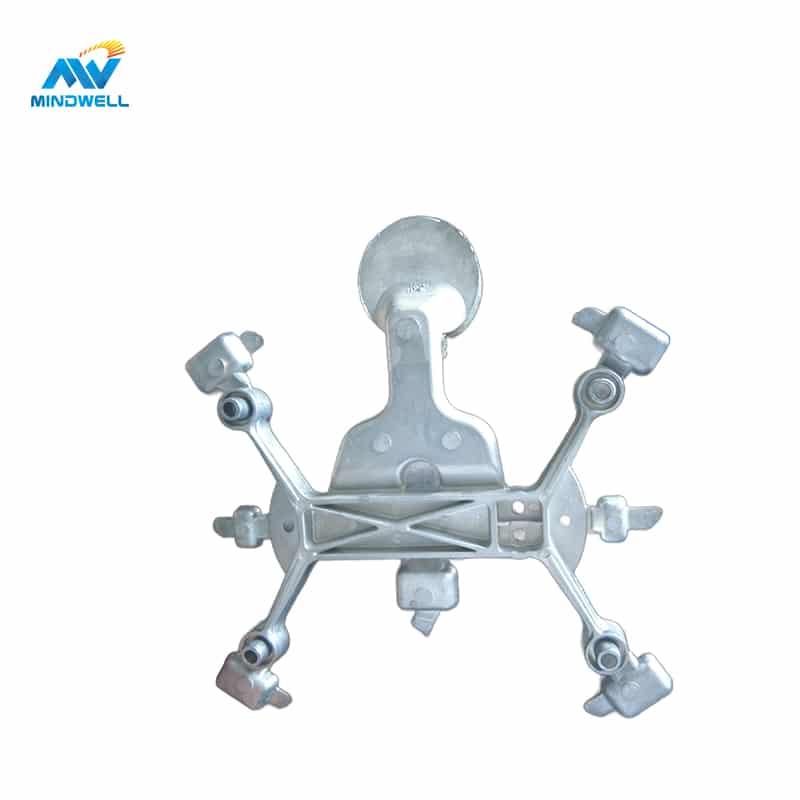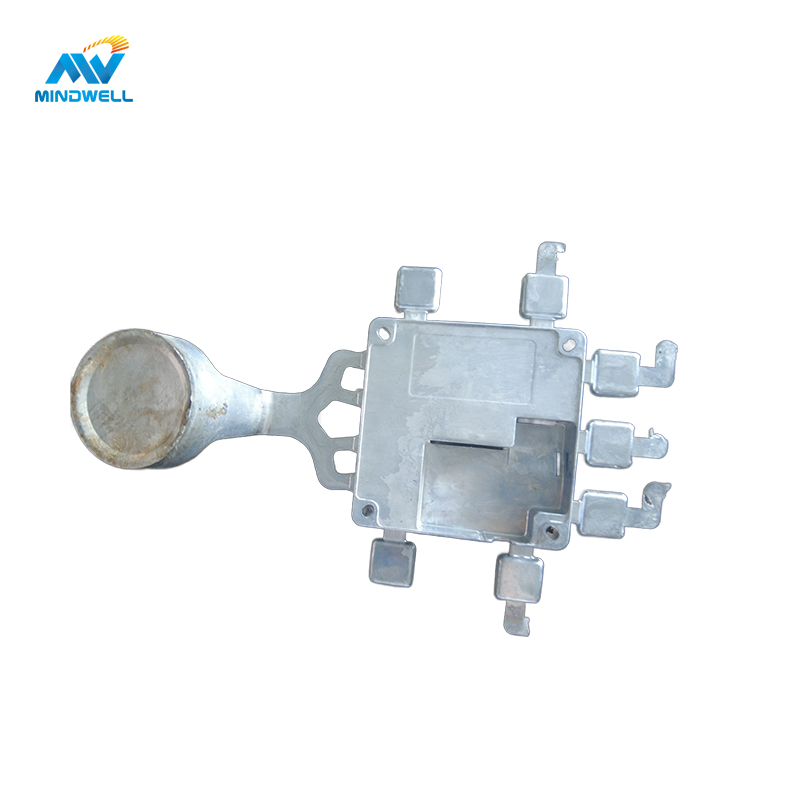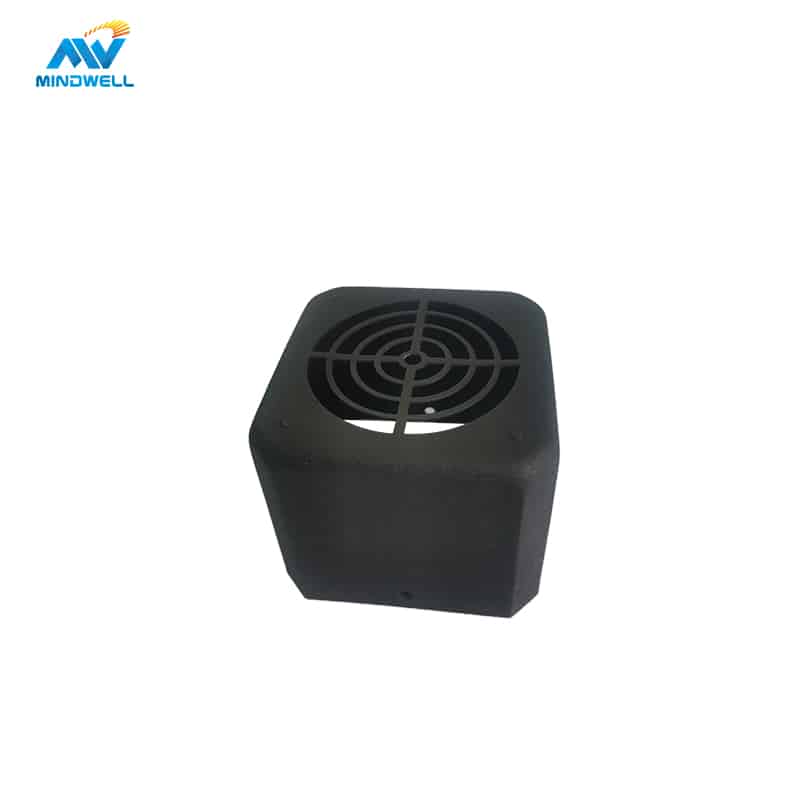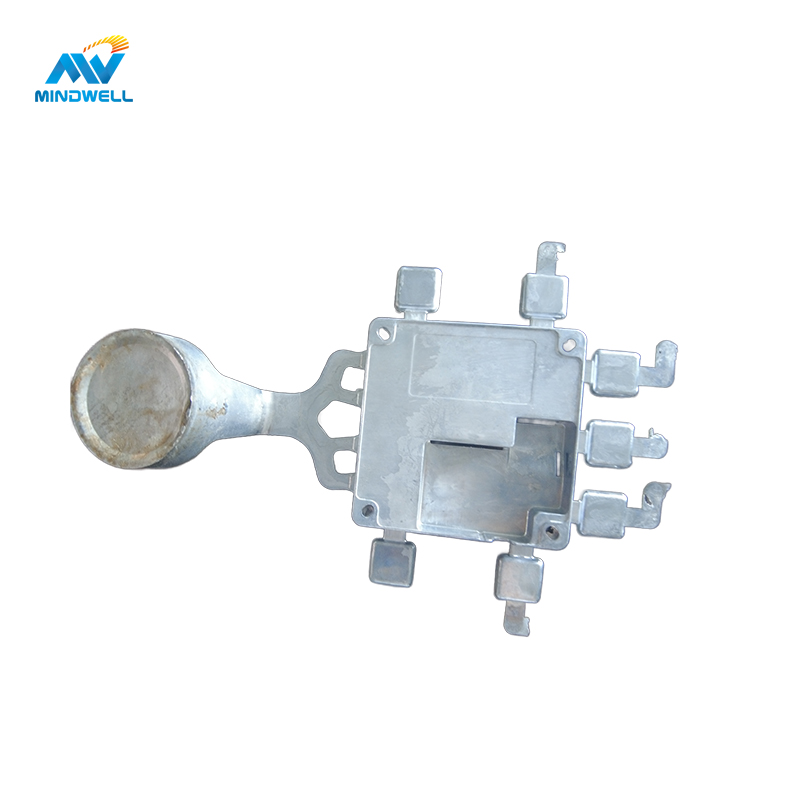Cast aluminum alloys are widely used in the fields of automobile manufacturing and aviation industry due to their excellent casting performance, good corrosion resistance, high specific strength and low production cost. A356 aluminum alloy is a commonly used casting Al-Si alloy. Because of its good fluidity, good air tightness, small shrinkage rate and small heating tendency, it is usually used to manufacture castings with complex structures such as automobile engine cylinder heads, slider components and wheel hubs. .
With the development of the automobile industry, the expansion of its application scope puts forward higher requirements on the mechanical properties and heat dissipation capabilities of parts. The tensile strength of metal mold casting A356 alloy is about 180 MPa, the elongation is about 5.0%, and the thermal conductivity at room temperature is about 150.7 W/(m∙K). The main factors affecting the mechanical properties of cast aluminum alloy include the type, size and morphology of phases in the alloy, and the nature, quantity and distribution of casting defects. During the squeeze casting process, due to the effect of pressure, the grains are refined, and the density of the structure is increased, thereby improving the mechanical properties of the casting. The tensile strength of the liquid extrusion casting can reach 208.975 MPa, and the elongation can reach 8.58%. In addition, with the increase of casting pressure, the thermal conductivity of the alloy increases significantly. However, due to the fast filling speed of liquid metal in liquid squeeze casting, it is inevitable that gas will be trapped and cause casting defects. After preparing the semi-solid slurry, squeeze casting is performed to increase the viscosity of the slurry and eliminate casting defects to the greatest extent. Zhu Liang used semi-solid squeeze casting to prepare A356 aluminum alloy piers. Due to the spheroidization of α-Al and the refinement of eutectic Si in the microstructure, the mechanical properties were improved, and the tensile strength was improved compared with continuous casting. 7.8%, the elongation increased by 350%.
A356 alloy samples were prepared using three casting methods: Permanent Mold Casting, Liquid Squeeze Casting and Semi-solid Squeeze Casting. Their microstructure and eutectic Si phase morphology were observed, and their thermal conductivity and mechanical properties were tested and analyzed. To understand the application fields of A356 aluminum alloy.
Test materials and methods
Test material
The test material is commercial A356 aluminum alloy, and its composition is shown in Table 1.

Test method and equipment
Three different casting methods including PMC, LSC and SSC were used in the test. Among them, PMC used the SG-7.5-10 well-type crucible resistance furnace to re-melt the commercial A356 aluminum alloy. When the temperature rose to 720°C, 26 with a mass fraction of 1% was added for refining (degassing and slag removal) and then left to stand. , and then poured into a mold preheated at 250 ℃ to obtain a casting. Squeeze casting uses a 600T horizontal squeeze casting machine with an injection force of 784 kN, a specific pressure of 101 MPa, and a holding pressure of 15 s. The aluminum alloy liquid is poured into the cylinder of the squeeze casting machine preheated at 250 ℃ after the refining slag is removed and allowed to stand, and then the alloy slurry is pushed into the mold preheated at 250 ℃ for extrusion. SSC, on the other hand, pours the smelted A356 aluminum alloy melt into a drum-type semi-solid slurrying machine to make slurry (outlet temperature is 590°C), and then injects it into the barrel of the extruder for extrusion. The size of the formed part is 160 mm × 170 mm × 8 mm.
The samples of different casting methods were rough ground and finely ground to smooth and polish the surface, and then corroded with 0.5% HF solution for 20 s. The microstructures of the three castings were observed under a metallographic microscope (4XG-MS). The eutectic Si phase and tensile fracture were observed by scanning electron microscopy (QUANTAFG-450). X-ray diffractometer (D/max-2400) was used for phase analysis, 2θ was 20°~90°, and the lattice constant was analyzed by Jade5.0 software. The thermal diffusivity is measured by LFA457 laser thermal conductivity analyzer, the test temperature is 25 °C, and the sample size is φ12.7 mm×
λ=α•ρ•c (1)
In the formula, α is the thermal diffusivity, m㎡/s; ρ is the density, g/cm³; J/(g·K).
Use a wire cutting machine to cut the tensile specimen (see Figure 1), use the WDW-100D electronic universal material testing machine to conduct a tensile test, and record the tensile strength and elongation of the specimen. The HB-3000B Brinell hardness tester was used to test the hardness of the alloy.
Influence of casting process on properties of A356 aluminum alloy Conclusion
- The casting method significantly affects the microstructure and morphology of A356 aluminum alloy. The α-Al grains of the metal mold casting sample are coarse dendrites with an average size of 137.807 μm, and the eutectic Si phase exists in lath and lamellar shape with an average diameter of 4.04 μm; The grains are obviously refined, showing the smallest cellular crystals, with an average size of only 43.512 μm. The eutectic Si phase changes into a slender rod shape, and the average diameter drops to 2.05 μm; the average size of the grains obtained by semi-solid squeeze casting is 64.824 μm, slightly larger than liquid squeeze casting, but the shape is more rounded, the average diameter of the eutectic Si phase drops to 1.61 μm, and becomes a worm-like shape with small size, curved shape, and blunt edges.
- Vacancies and dislocations, grain boundaries, element solid solution, etc. will cause the thermal conductivity of the alloy to be lower than that of pure metals, but the thermal conductivity of A356 aluminum alloy is most sensitive to the eutectic Si phase morphology. As the size and aspect ratio of the eutectic Si phase decrease and the roundness increases, the thermal conductivity and thermal diffusion coefficient show an upward trend. The thermal conductivity of metal mold castings is 150.064 W/(m?K), and the thermal conductivity of liquid extrusion castings has increased to 2.0%, while the semi-solid extrusion castings have larger α-Al grains, round shapes, and eutectic Si The small size and passivated boundaries reduce the probability of scattering free electrons. The thermal conductivity reaches 160.220 W/(m?K), which is 6.7% higher than that of metal mold casting.
- Through squeeze casting, the internal casting defects of A356 aluminum alloy can be reduced and its mechanical properties can be improved. The tensile strength of the metal mold casting is 179.930 MPa, the elongation is 3.19%, and the hardness (HB) is 55. The tensile strength of the liquid extrusion casting reaches 209.446 MPa, the elongation is 6.93%, and the hardness (HB) rises to 64 ; The tensile strength of semi-solid extrusion castings reaches 223.514 MPa, the elongation is 13.68%, and the hardness (HB) is increased to 71, which is significantly improved compared to metal castings.






